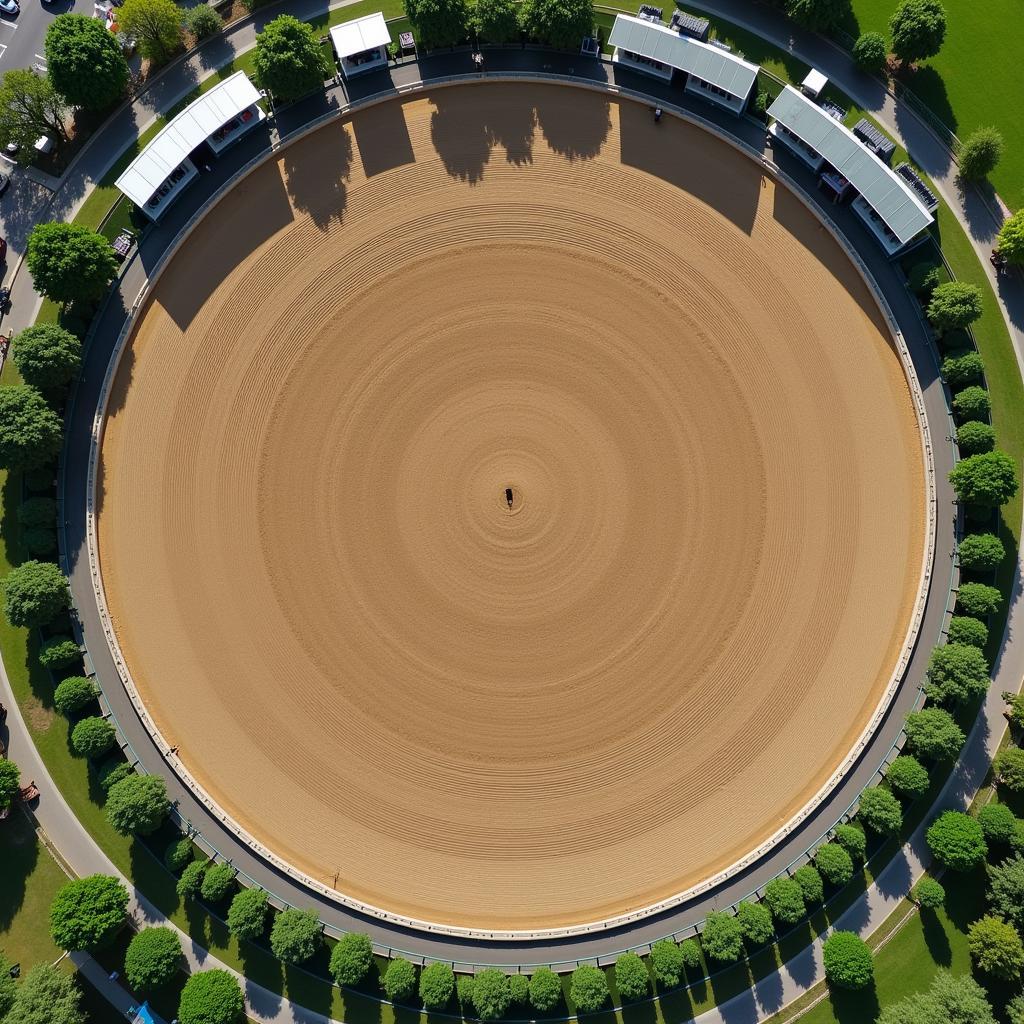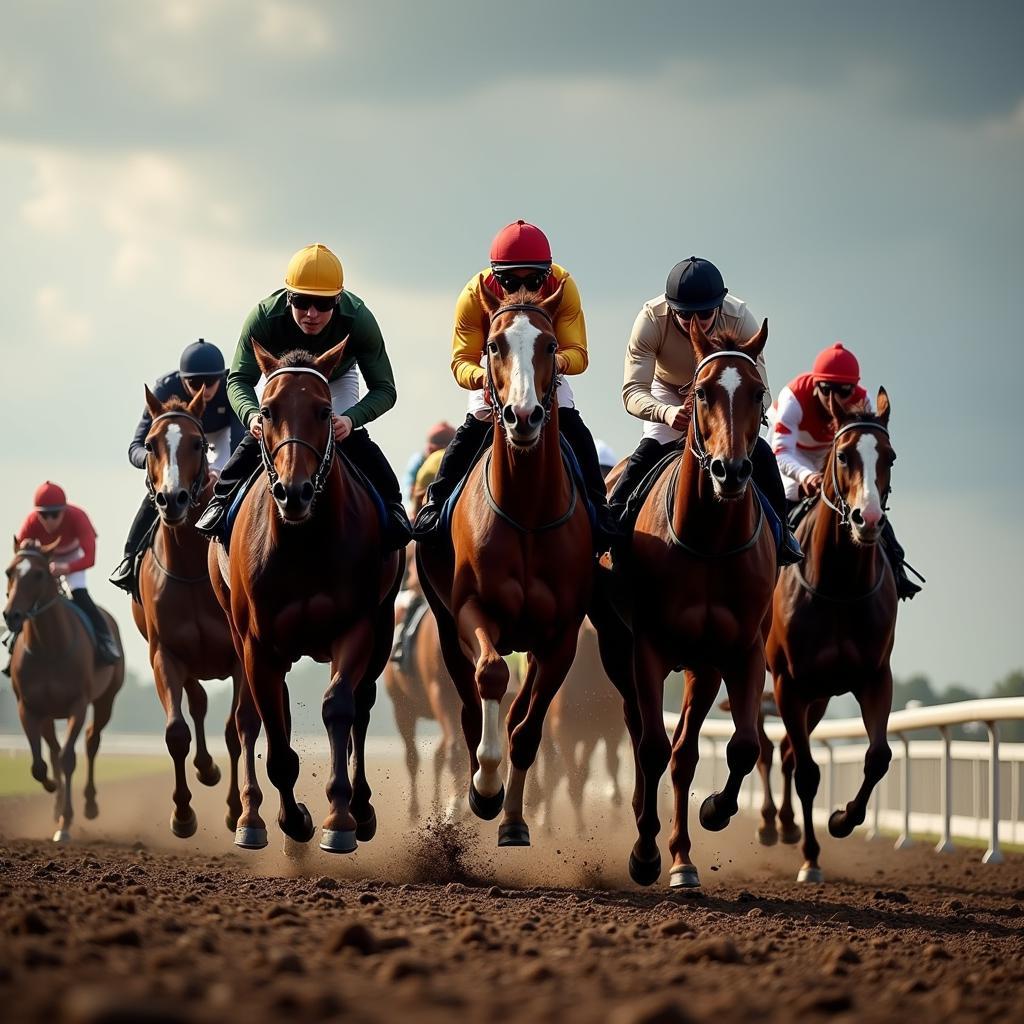Horse racing, a sport steeped in history and tradition, captivates audiences worldwide with its blend of speed, strategy, and equine athleticism. Behind the thrilling spectacle lies a carefully crafted stage: the race track. These arenas, meticulously designed to test the limits of horse and jockey alike, come in a fascinating array of shapes, sizes, and surfaces. Understanding Horse Race Track Dimensions is key to grasping the nuances of the sport and appreciating the challenges it presents.
The Anatomy of a Horse Race Track
A horse race track, far from being a simple oval, is a symphony of carefully calculated curves, straightaways, and surfaces. Let’s break down the key elements:
-
Track Surface: The racing surface plays a crucial role in a horse’s performance. Common surfaces include dirt, turf (grass), and synthetic materials. Each surface offers unique challenges, influencing factors like traction, speed, and even a horse’s susceptibility to injury.
-
Shape and Circumference: While most tracks are oval, variations exist, with some incorporating figure-eight designs or steeper turns. Circumference, typically measured in miles, directly impacts race distances.
-
Straightaways: These straight sections offer a crucial opportunity for horses to accelerate and jockeys to strategize overtaking maneuvers.
-
Turns: Turns are where the skill of both horse and jockey shines. Negotiating tight bends efficiently while maintaining speed requires balance and precision. Banking, a slight inward slope on turns, helps counteract centrifugal force and enables horses to maintain speed.
-
Rails: The inner boundary of the track, marked by a fence, is crucial for understanding racing strategy. Running “on the rail,” closer to the inside, offers the shortest path but requires maneuvering through traffic.
 Horse Race Track Aerial View
Horse Race Track Aerial View
Standard Horse Race Track Dimensions
Although variations exist, understanding standard dimensions offers valuable insights:
-
North America:
- Dirt Tracks: Typically range from 1 mile to 1 1/4 miles (6-8 furlongs) in circumference.
- Turf Courses: Often shorter, varying from 5/8 of a mile to 1 1/8 miles (5-7 furlongs).
- Width: Ranges from 45 to 80 feet, providing ample space for maneuvering.
-
Europe:
- More variation in shape and surface, with a blend of flat and jump racing.
- Circumference: Can be as short as 1 mile or extend beyond 2 miles.
Factors Influencing Track Design
Numerous factors contribute to the design and dimensions of a horse race track:
- Geography: Available land area significantly influences track dimensions.
- Climate: Weather patterns and regional climate impact surface choice. Turf courses require specific temperatures and rainfall for optimal growth.
- Racing Traditions: Historical racing formats and traditional race distances play a role in track design.
Understanding Track Dimensions: A Key to Enjoying Horse Racing
Whether you’re a seasoned bettor or a casual fan, grasping horse race track dimensions enriches your understanding and enjoyment of the “Sport of Kings”:
-
Appreciating Race Strategy: Knowledge of track dimensions allows you to analyze jockey decisions. Will they hug the rail for a shorter path or swing wide for a clear run?
-
Understanding Performance Variations: A horse excelling on a tight, dirt track may not perform as well on a longer, grassy course. Track dimensions are crucial when evaluating a horse’s past performances.
-
Enhancing Your Betting Prowess: Savvy bettors consider track dimensions when placing wagers. Understanding how a particular track’s layout might favor certain running styles or influence race outcomes is invaluable.
 Horses Racing Down the Homestretch
Horses Racing Down the Homestretch
FAQs about Horse Race Track Dimensions:
1. What is the longest horse race track in the world?
The Grand National Steeplechase course at Aintree Racecourse in England, stretching over 4 miles and featuring 30 challenging jumps, claims the title of the longest horse race track globally.
2. Why are some horse race tracks sloped on the turns?
The inward slope, known as banking, helps counteract centrifugal force, allowing horses to maintain speed while navigating the turn. Without banking, horses would need to slow down significantly, impacting their overall race time.
3. How do track dimensions impact horse racing strategy?
Track dimensions influence crucial decisions made by both jockeys and trainers. A shorter track with tight turns might favor horses with early speed, while a longer track with sweeping turns could benefit horses known for their stamina.
Seeking More Insights into the World of Horses?
For those eager to delve deeper into the captivating realm of horses, be sure to explore our other informative articles:
Need Expert Advice on Horse Care or Equestrian Pursuits?
Don’t hesitate to reach out to the experts at Justus Horses USA. We’re dedicated to providing insightful information and resources to horse enthusiasts of all levels. Contact us at 0772127271 or [email protected]. Our team is available 24/7 to assist you. You can also find us at QGM2+WX2, Vị Trung, Vị Thuỷ, Hậu Giang, Việt Nam.